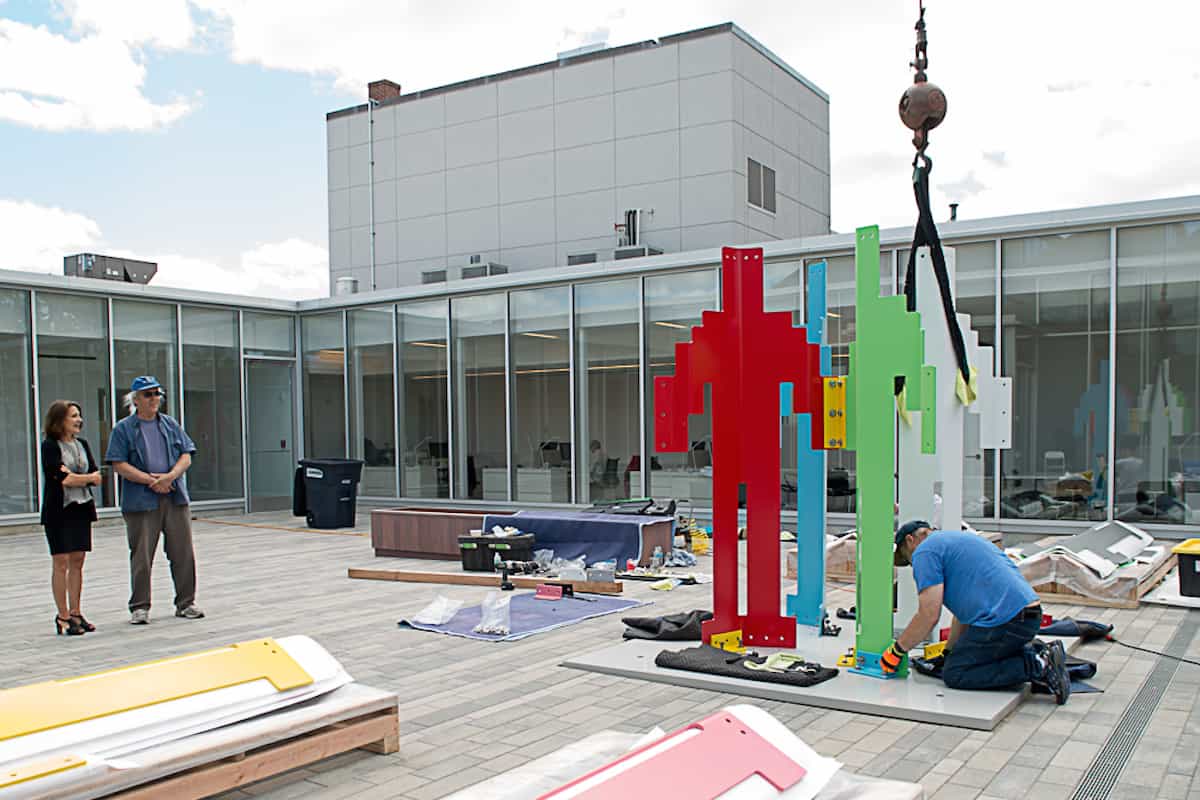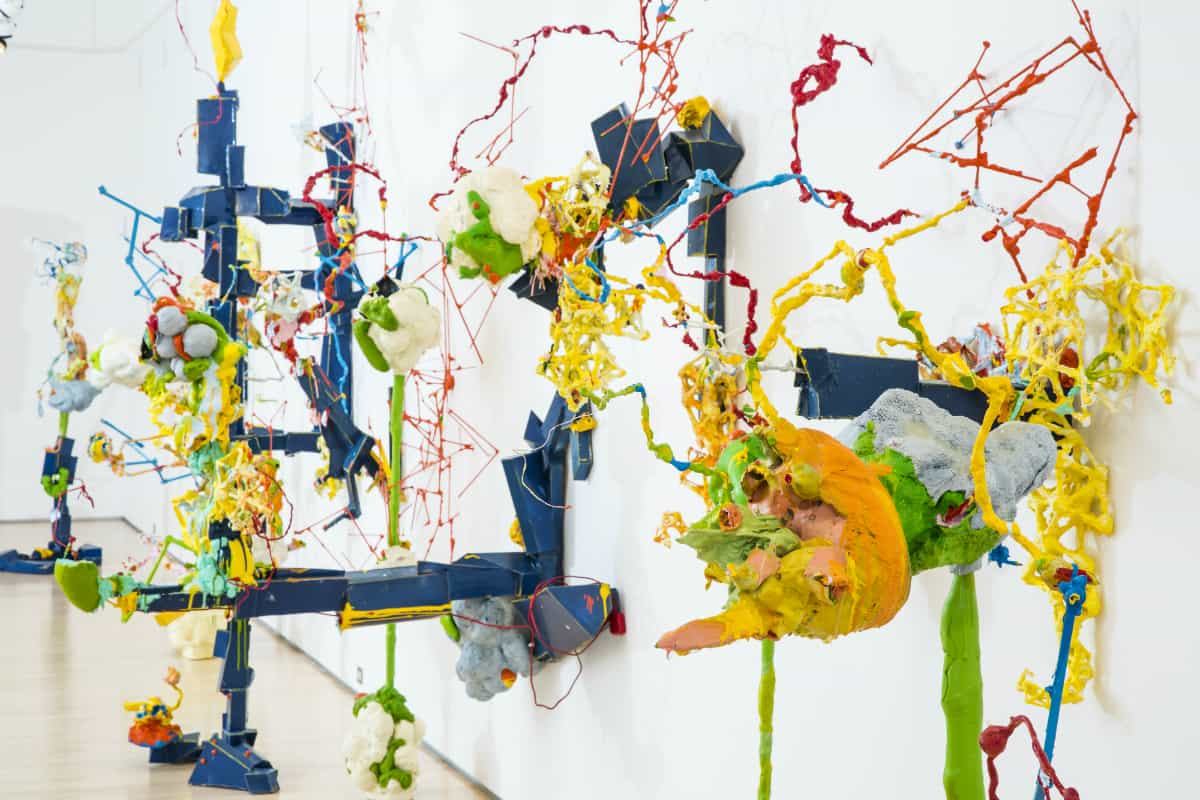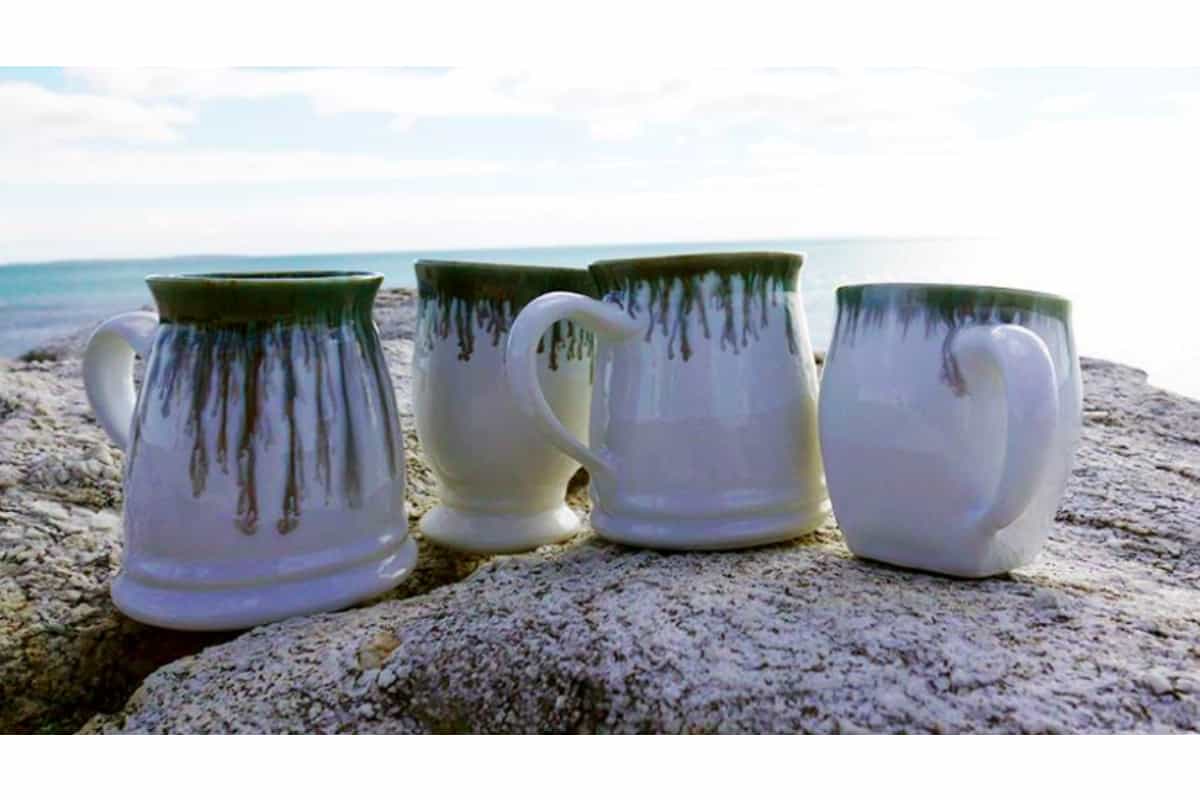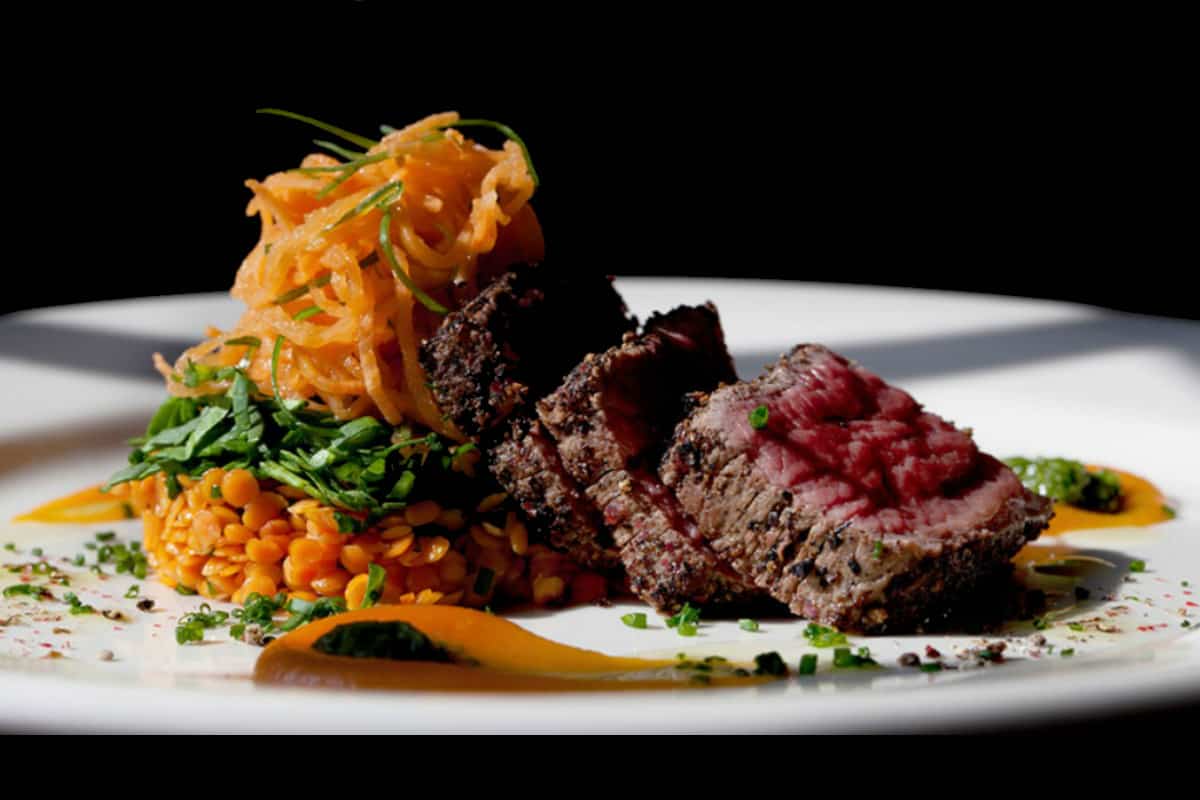This past summer, cutting-edge art in Maine found a new home at the Center for Maine Contemporary Art in Rockland.
“Traditional museums are inside out,” says Suzette McAvoy. “They are great temples of art, with formal façades that sit at the top of steps. We break down the barrier and are more welcoming to the community.”
McAvoy, executive director and chief curator of the Center for Maine Contemporary Art (CMCA), is framed by a backdrop of glass, cement and a jagged, light-emitting roof that mimics the ocean waves two blocks away. After more than five decades in a former firehouse and livery stable, the new CMCA opened this past June, a key component of the current wave of cultural revitalization in Rockland, Maine.
The exterior of the building is galvanized zinc with brushed stainless trim. The exterior glass walls reveal the art inside; there is a courtyard with space for art. Inside, the sightlines are wide enough to really see the art, says Mcvoy. The former space was limited by, “scale and vertical dimensions. Being a 19th Century livery stable, even though renovated, it had structural issues.”
Three contiguous galleries can exhibit the work of three artists or the work of 25 artists, which will be the case this November when CMCA holds its biennial.
McAvoy toured Take just prior to the opening of the new facility.
We enter the empty building via the loading dock and face a long highly polished concrete floor. We are joined by McAvoy’s daughter, Elizabeth, who is home from the Rhode Island School of Design. She once sat for Alex Katz who painted her portrait in his studio in Lincolnville. She was just a kid at the time.
McAvoy motions to a curving front desk leading to a large expanse of wall space. “We’re making art front and center rather than wasting the space with information about the gallery,” she says. The gift shop is tucked away like a Murphy bed.
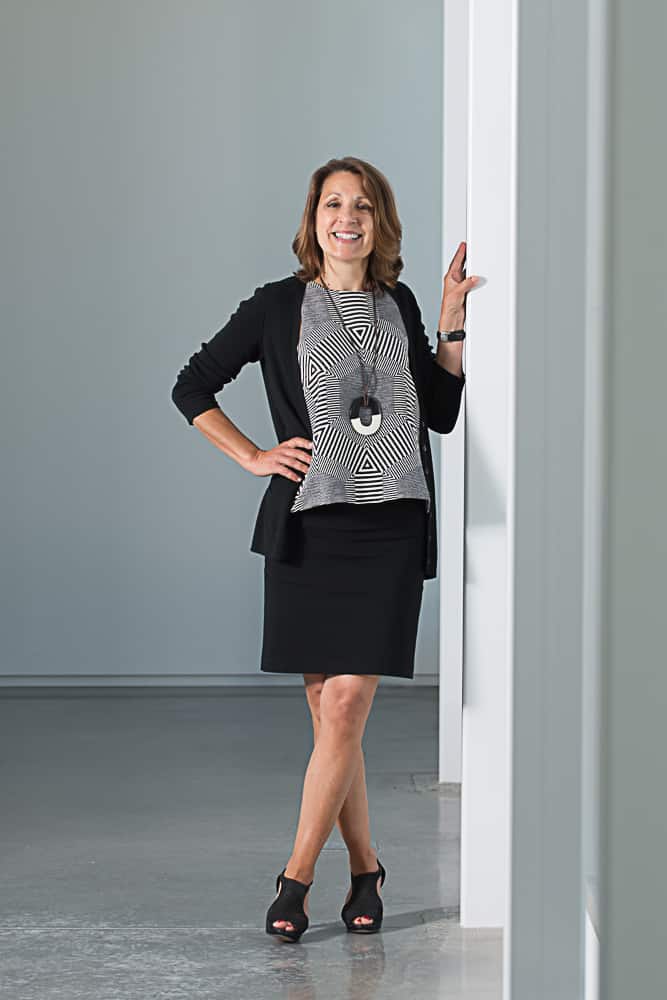
CMCA executive director Suzette McAvoy | Photo by Amy Wilson
This isn’t your father’s or mother’s art museum. CMCA is an American Kunsthalle, a German term for a building that hosts art exhibitions.
“It makes us nimble,” says McAvoy. “As an exhibition space, we can take a chance on artists, which is what CMCA has always done – and it always works out.” McAvoy ticks off additional benefits to being an exhibition space rather than a museum.
“First of all, museums have permanent collections,” she says. “They require time, effort and expense.”
We walk into the large gallery space and watch the light play on the bare white walls.
“Second,” says McAvoy, “there is the cost and the work of conservation. Then there is the effort to acquire the gifts. And there is the storage, of course.”
We move from one gallery space to another observing through the skylights, a 20-foot sign that says “EAT” in giant letters. It is Robert Indiana’s piece originally created for the 1966 World’s Fair and now on the roof of the Farnsworth Museum next door.
Architect Toshiko Mori designed the CMCA building to capture the light of Penobscot Bay and bestow it on Maine, and Maine-connected, artists who will show there. The new building on Winter Street came into being due to a large bequest by Nellie Taft, descendant of two presidents, a board member of the Whitney and also a painter.
The town of Rockland itself is experiencing a revival. As of six years ago, the little working-class community on the coast was known for sardine processing, but the plant closed and galleries began to migrate north from Portland, 75 miles to the south. There are 25 art galleries in Rockland and three art-making spaces. New restaurants, coffee roasters, a bakery or two, and consignment shops compete for business a block from the waterfront. New boutique hotels opened over the summer, constructed by boat builders. Another new hotel acts as a gallery, catering to the type of clientele that might be inclined to purchase a five figure painting, it has art for sale as well as rooms with floor-to-ceiling windows facing the bay.
“The final thing to fall into place was the availability of a piece of property right next to the Farnsworth Museum in Rockland,” says McAvoy. She expects foot traffic to improve now CMCA is in the heart of what is beginning to look like the new center for art in Maine.
Prior to her engagement with CMCA in 2010, McAvoy was head curator of the Farnsworth Museum, which specializes in art related to Maine and to the art of the Wyeth family.
“I gave Jamie a little tour earlier this week,” she said of the surviving member of the art dynasty. “He thought it was wonderful.”
Artists are a natural resource in a state where paintings have been made from points along the coasts by the likes of Edward Hopper, Winslow Homer and NC, Andrew and Jamie Wyeth.
Along the craggy coastline of Maine there are pocket beaches where stones get caught within the embrace of bedrock. Time and the tide polish the stones to a deep luster. Some stones are veined with white quartz.
These objects of beauty are prized by jewelry makers and have even been confiscated at airports by officials. Protected from jewelry-making predators, the stones are considered natural resources, like Maine’s painters. Year after year artists return for the Maine light to paint. Their work gains luster; the artists sometimes gain fame.
First to exhibit in CMCA’s main gallery was an artist who lives and works in Maine but had never shown in the state before. Jonathan Borofsky is a busy man on the international art circuit in Berlin, Korea, the Beijing Olympics. He agreed to create work for the new CMCA building’s inaugural show when he had a look at the looming main gallery space with 26-foot ceilings. The 50′ x 52′ space is the exact size of his studio in Ogunquit and the light from the vertical windows in the sawtooth roof brought back memories.
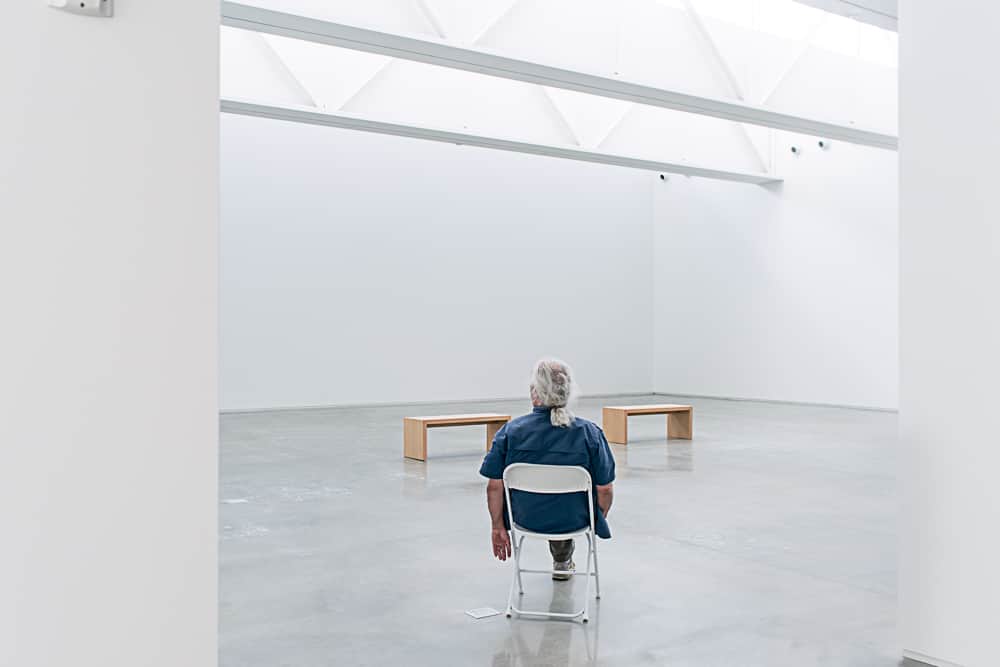
Interior CMCA | artist Jonathan Borofsky | Photo by Amy Wilson
“It was exactly like the kunsthalle in Basel,” he says, referring to an installation in Switzerland called Dreams 1973-81. Borofsky is best known for his series of massive site-specific sculptures “Hammering Man” in Frankfort and “Molecule Man” in Berlin.
The sculptor’s work is sometimes towering totems of abstracted figures in galvanized steel and polished aluminum, sometimes painted, sometimes not.
“The reason for this show at the new CMCA is for people to look at great art,” says Borofsky. “Not to show it or sell it.”
Borofsky says his work is of a spiritual nature. His initial inspiration was Gauguin. “When I first saw the Gauguin painting “Where do we come from? What are we doing? Where are we going?” as a kid, I realized I could do that, I could find out the answers to those questions. Gauguin gave me permission.”
The other two exhibitors to open CMCA were Alex Katz and Rollin Leonard, both Maine summer residents. Katz exhibited a series of “direct” paintings, a first pass at his 9” x 12” oil portraits in oil and Leonard, a virtual unknown, exhibited a multi-media work called “Vernal Pond.”
Programming for CMCA also includes ArtLab, which focuses on the local community, with classes and workshops for students and adults.
“The exhibits support the programming,” says McAvoy. “We exhibit to serve the educational programming. That exposes people to art who wouldn’t normally have access to shows of this work.”
When asked if the light is really what draws artists to Maine, McAvoy responds that it is the light and also the affordability of the wilds of Maine. And one other thing.
“Painters come here because of the light but also because of the isolation,” she said. “Maine is where the work gets done.”

